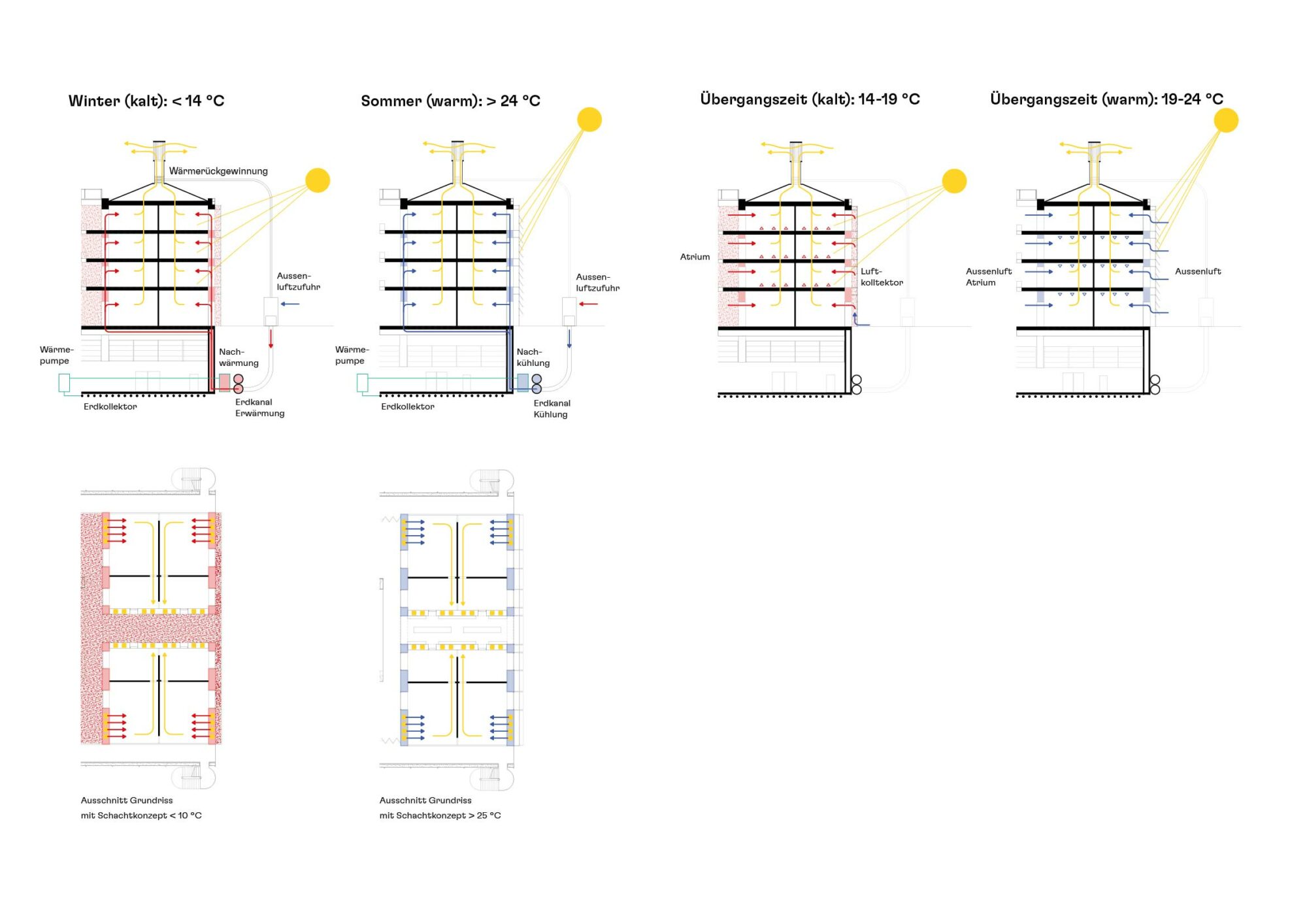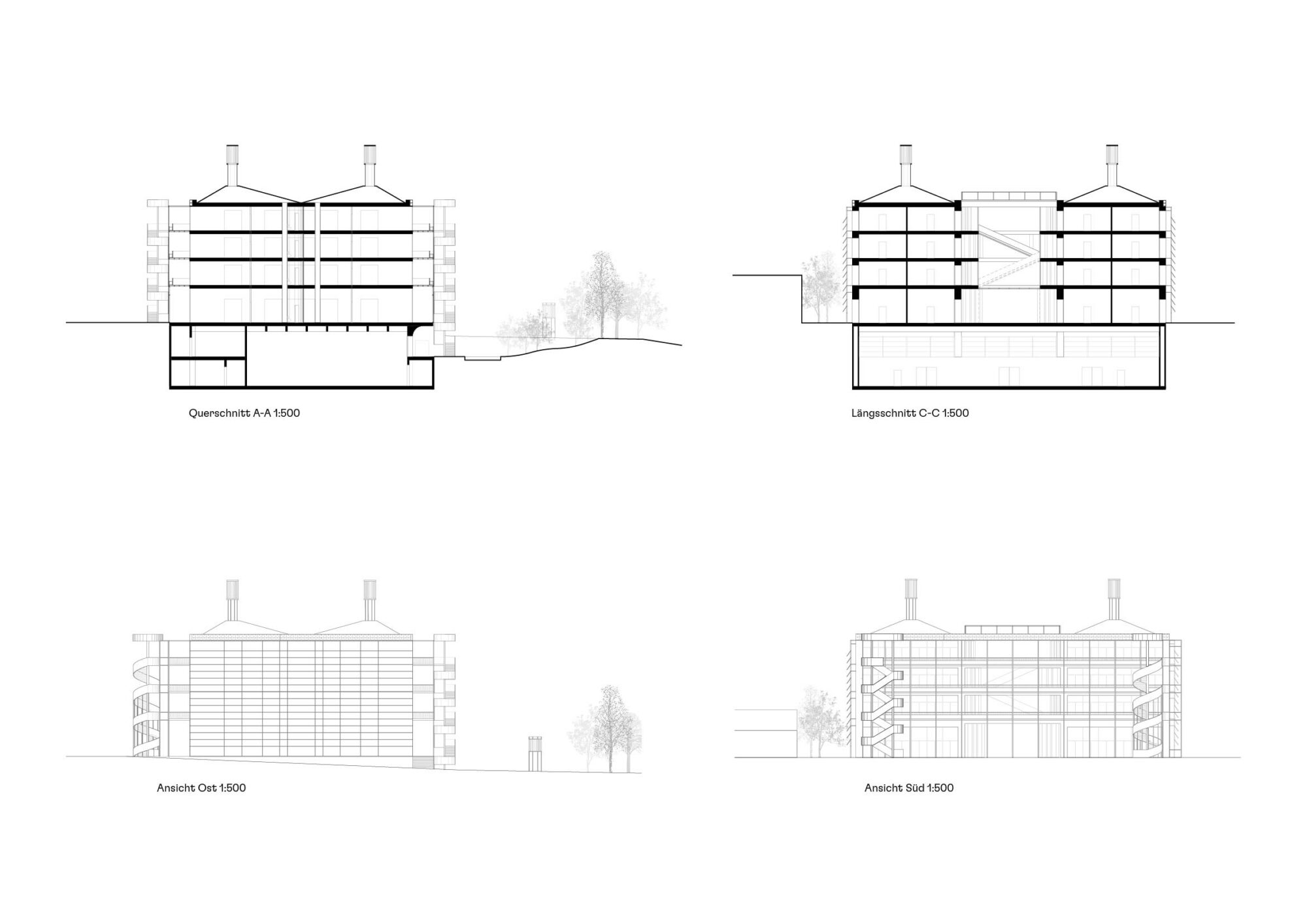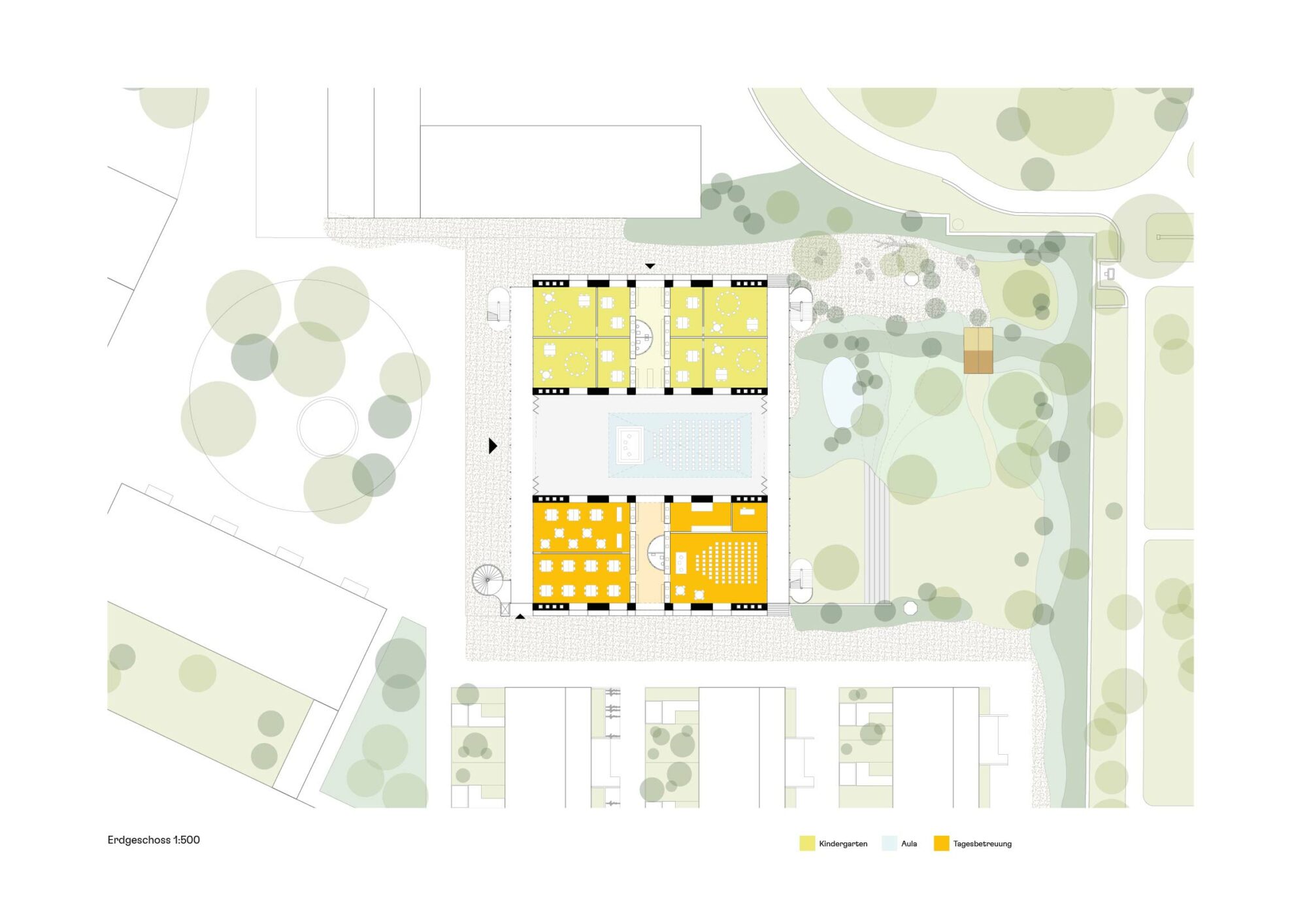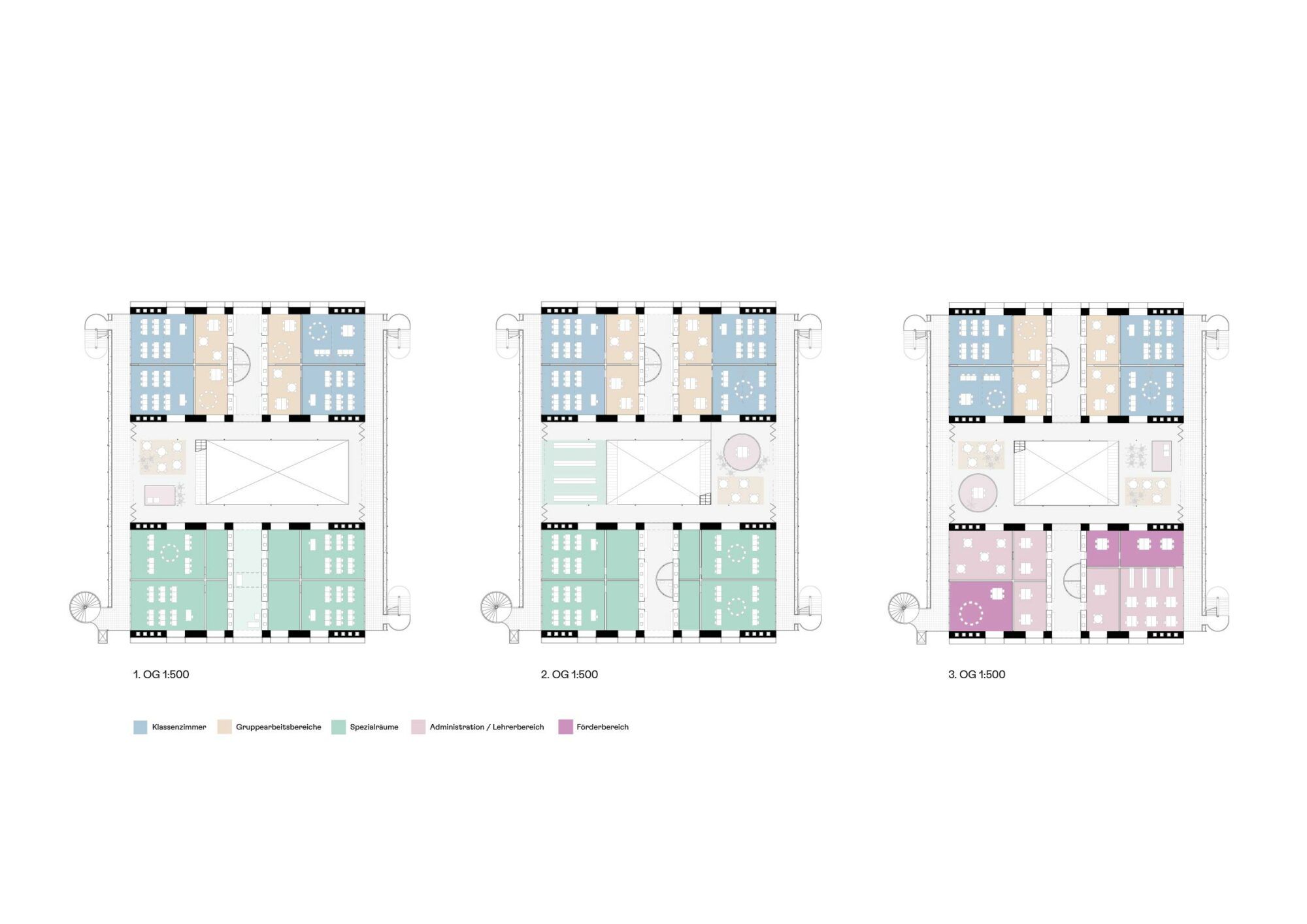School of sensations
We are observing an increasing automation of buildings as high-tech machines, which we are extremely skeptical of. For example, in very few school buildings there is still a janitor who checks in the evening whether all doors and windows are closed. The building automation, in interaction with mechanical ventilation, controls and regulates computer-driven the comfort and safety mechanisms, so that the human being does not have to think about anything anymore, or even care about it. We are not advocating that all technology be omitted. Nevertheless, we believe that for a renewed understanding of living together with our environment, the user and human being must once again take center stage.
One house, three climates
Climatically, a distinction is made between uses that have high comfort requirements (classrooms, etc.) and uses in which lower temperatures seem acceptable at certain times of the year. In front of the building there are balconies in the outside space, which lead to the 4 exterior staircases at the corners of the building, which form the vertical access. Thus, not only different climatic conditions within the building can be experienced, but actually only the minimum necessary area is heated. The basement contains the gymnasium, which is lit from the side with a top light.
The building is thus divided into three climatic zones:
1st indoor climate, 2nd intermediate climate, 3rd outdoor climate.
In good weather we imagine the building as constantly open – even after school hours the wind can blow through here. The building thus acquires something perfomatic, and hopefully also something human. It is changeable in its nature; when it gets cold it puts on a sweater, and when it is warm it lets its clothes down. Climatically, it merges with its surroundings, dissolving the boundaries between building and environment. In the spacious buffer zone, parts of which are deliberately unprogrammed, classes can be held outdoors in the summer. The auditorium, located here on the first floor, can be separated by a curtain to allow privacy and create a delineated area that remains comfortably tempered with the process energy of the students present (1 person = 85W).
Energetic components
(Indoor climate)
1. Four wind towers on the roof act as exhaust stacks, providing natural cross-ventilation in the classrooms.
They sit on top of a pyramid-like cavity covered with dark-colored photovoltaics, which heats up when exposed to sunlight. The buoyancy of the warm air creates a suction effect that pulls air out of the classrooms through shafts. As an end piece, there is an oversized tube top that is equipped with sensitive rotor blades, and acts as a natural ventilator to support even the smallest outside wind. Although different in operation, there are similar elements in historical Persian architecture, where tall wind towers work with natural chimney effects.
2. The front facades of the school building are designed as a double facade and air collector.
An air collector works like a cold frame or the foil of asparagus farmers. Air is heated in the intermediate layer of a double facade. This is stored in the storage mass of the wall behind it. This means that insulation can be dispensed with, and at the same time solar gains are used for energy. The temperature curve in the wall is reversed due to the warm air in the collector – this means that it is warmer in the air wiping room than in the interior. In the summer period, it is necessary to ventilate. In the present project, this is made possible by the hinged mechanism of a simple greenhouse system, which, provided with single glazing, also allows views when closed, and makes the surface of the wooden wall structure visible to the outside.
3. Earth ducts under the floor slab provide geothermal cooling in summer and preheated supply air in winter.
During the heating period, the air, which is approximately 12 degrees warm, is used to preheat the atrium or even the classrooms. The necessary temperature is achieved via a heat exchanger and reheating. In the cooling period, the cool air is used directly. In connection with the wind towers the air is transported. The cross sections are determined by thermodynamic simulation.
Translated with www.DeepL.com/Translator (free version)







